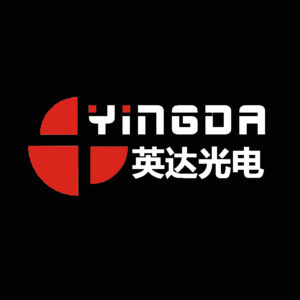With the development of global digital industrialization applications and industrial digital transformation, the digital economy has entered a new era with computing power as the core productivity. The supply and use of computing power must be based on reliable network connections, and optical networks are the key elements to support the development of computing power services and applications. In recent years, the world has made positive achievements in the layout of high-speed all-optical computing power networks. As a world-leading fiber optic cable manufacturer and optical communication solution provider, Intech maintains close cooperation in the field of optical transmission technology research, helping to promote the digital transformation of optical networks, and laying a solid foundation for the development of the digital economy and the digital transformation and upgrading of industries.
With the rapid development of the digital economy, data traffic is increasing day by day. In the 400G era, and even in the future 800G and T-bit era, what new requirements and challenges does the high-quality computing power network put forward for key technologies such as optical fiber performance and transmission capacity?

G.654.E, the first choice for the next generation of computing network
In the centralized procurement of optical fiber and cable products in China in recent years, in addition to G.652.D ordinary optical fiber, the frequency of G.654.E optical fiber has begun to increase. Industry experts believe that the commercialization of G.654.E optical fiber has opened the curtain for the construction of the next-generation all-optical computing backbone network.
G.654.E optical fiber has the characteristics of ultra-large effective area and ultra-low attenuation. It has very obvious technical advantages in the transmission of ultra-400G backbone networks with large bandwidth, low latency and long span. Test data shows that for trunk lines with a rate of 400G, G.654 optical fiber is expected to increase the distance by 60% to 80%.
In addition, the industry and academia have also been conducting in-depth research to further explore the potential of G.654.E optical fiber. It is understood that in terms of performance, the loss of G.654.E optical fiber is expected to be optimized to 0.15dB/km in the future, and the transmission flatness of the entire C+L band may also be further improved. This will also help the application of the C+L band.
So far, Yingda G.654.E optical fiber has been successfully built with network infrastructure projects in many countries such as China. At the same time, we are conducting innovative research on the application of new G.654.E optical fibers, and have participated in large-capacity, long-distance, and high-speed transmission tests many times, making new breakthroughs.

People’s pursuit of light will never stop. With the large-scale development and application of AI, a batch of new optical fibers are ready to go.
At present, the industry is mainly improving the performance of existing optical fibers from the two directions of wavelength flatness and attenuation reduction. The next generation of mainstream optical fibers: From the technical solution point of view, there are two main routes, namely space division multiplexing (SDM) optical fiber and hollow core optical fiber. The industry has basically reached a consensus on this point of view.
Space division multiplexing (SDM) optical fiber refers to the multiplexing method of transmitting different signals at different spatial locations, which is equivalent to building an elevated road on the same road to increase the number of lanes, so as to achieve the effect of increasing traffic volume. Common space division multiplexing optical fibers mainly include multi-core optical fiber, few-mode optical fiber, orbital angular momentum optical fiber, etc. The difference between hollow core optical fiber and ordinary silica-based solid optical fiber is that the internal core is hollow, with ultra-low loss and dispersion and a propagation speed close to the speed of light. It is an ideal medium for future ultra-high-speed optical transmission systems.
As a company with many years of experience in optical communications, Yignda fiber optic manufacturer has always insisted on continuous innovation and technological leadership in optical fiber and cable. In the future, as the core technology of ultra-high-speed optical communications continues to deepen, it will continue to enhance collaborative innovation in the industrial chain, strengthen close cooperation with customers and industrial chain partners, and continuously explore cutting-edge technologies for the development of next-generation optical networks. Through forward-looking research and development, it will maintain the advanced level of technology and provide higher quality products for the sustainable development of optical fiber communications.

